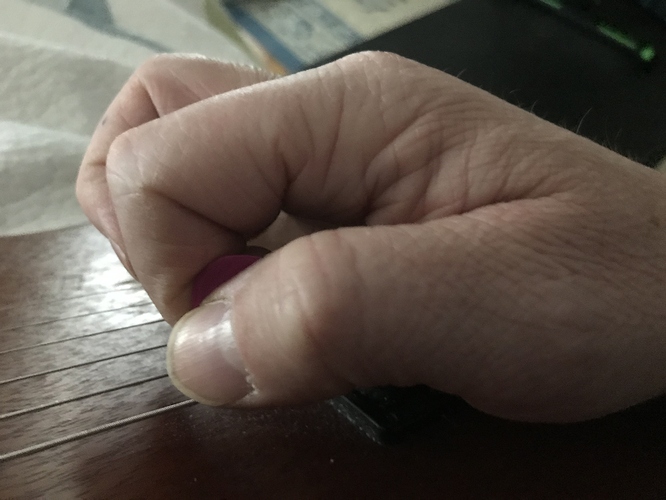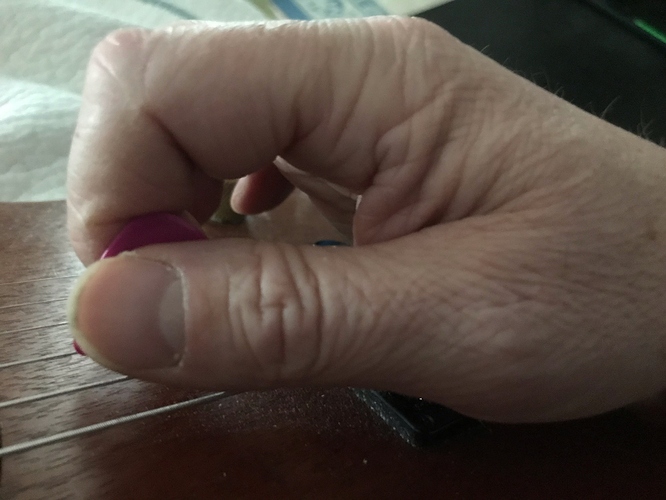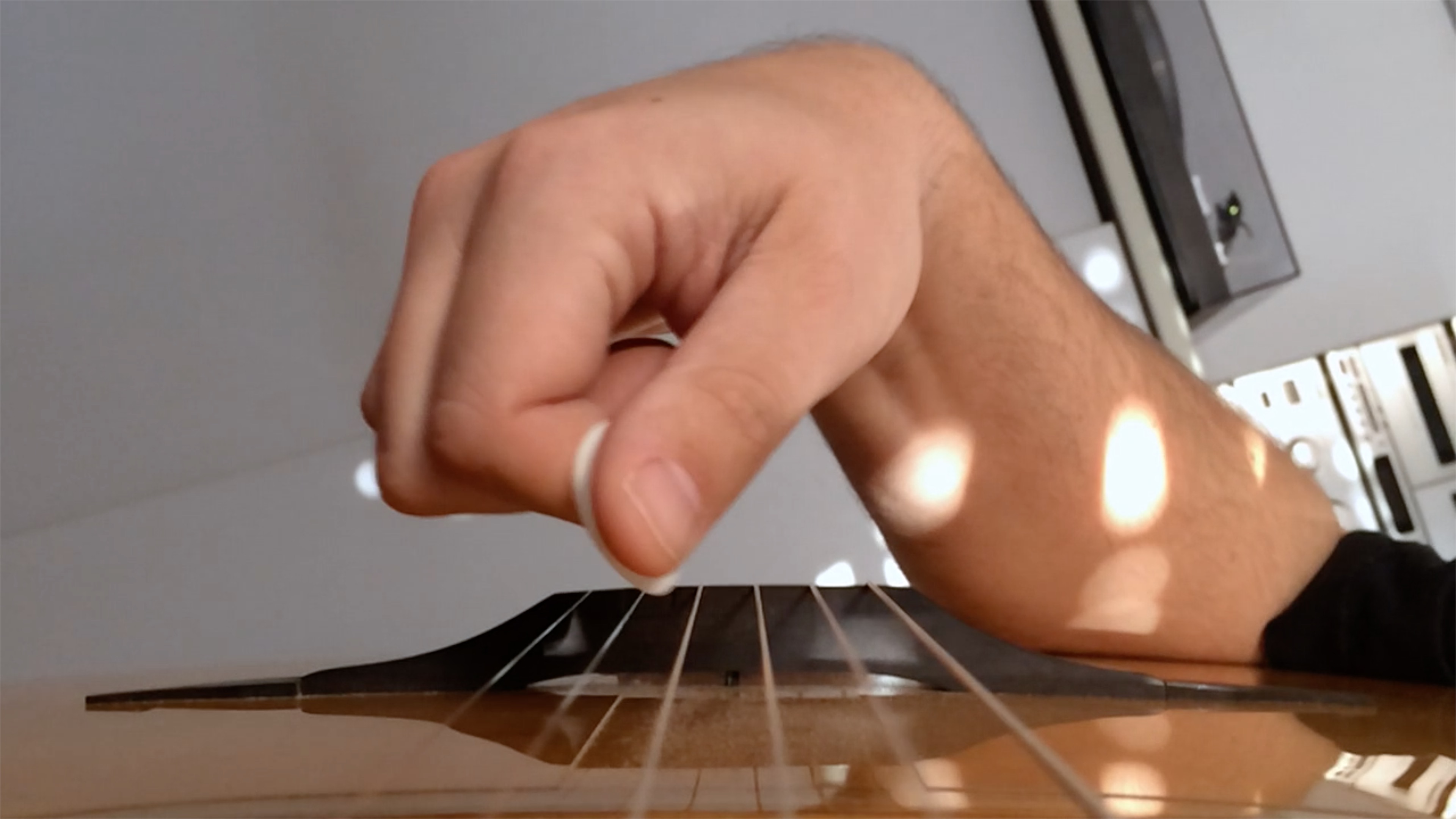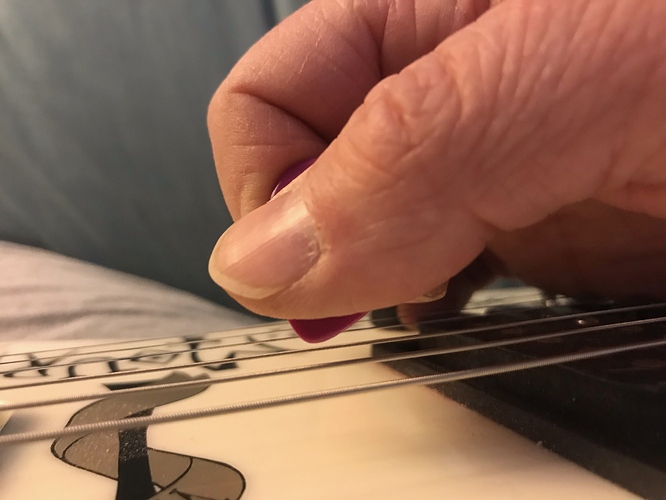I used to worry over the bent thumb vs flat thumb for a long time. I wanted to use it flat, but it seems largely based on what I’m playing. Sometimes, it just does what it does. And as long as I get the sound I want, I have learned to not think or worry about it. James Hetfield plays with the most bent thumb you’ll ever see, and if he can do that, then why can’t I, lol.
I found it also has to do with the length of the thumb, and fingers, the whole hand really. Some people will find it more natural one way or the other. That’s not to say it doesn’t matter, exactly, but it only matters if it hinders you from doing what you want to do: play fast, play clean, etc.
I find the exact opposite when I play with a flat joint thumb: LESS precision. It becomes more of a wrist thing, rather than a combination of the two that I use (wrist AND some thumb and finger joint movement).
Speaking of MAB, it was his idea that ‘what you do playing slow, you do playing fast’ that threw me for a loop. I tried it for about a year before I realized, wtf am I doing? I was getting WORSE results. So unless something I was doing was really inefficient (and there were some phrases, for sure), then I should go with what feels natural FIRST…and then tweak.
I’ll say this: no matter WHAT you do, if you can do it for an hour a day or so?..it becomes more and more automatic to the point where you just don’t think about it much anymore. So much can be achieved when you apply yourself to a good practice routine and get time in! In doing so, unless your natural inclination is akin to Paul Gilbert and his “upstrokes only” way of holding the pick (wow!) for the first few years of playing, then whatever feels natural is a great starting point.
When I think about it, my model on how to hold the pick was Malmsteen: relaxes, hand not really rigid, and a bit of a mix of fingers curled but still gently touching the pickguard. Once I started working that, the rest fell into place. Your hand geometry is genetic, but even then, there’s a lot of ways to approach it in the beginning to make things easier for you in the future. Good luck!




